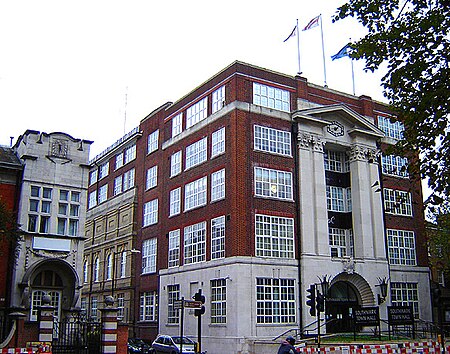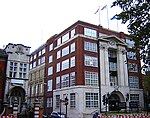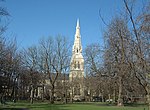Metropolitan Borough of Camberwell
1900 establishments in the United Kingdom1965 disestablishments in the United KingdomCamberwellDistricts abolished by the London Government Act 1963History of the London Borough of Southwark ... and 2 more
Metropolitan boroughs of the County of LondonParishes governed by vestries (Metropolis)

Camberwell was a civil parish and metropolitan borough in south London, England. Camberwell was an ancient parish in the county of Surrey, governed by an administrative vestry from 1674. The parish was included in the area of responsibility of the Metropolitan Board of Works in 1855 and became part of the County of London in 1889. The parish of Camberwell became a metropolitan borough in 1900, following the London Government Act 1899, with the parish vestry replaced by a borough council. In 1965 the borough was abolished and its former area became part of the London Borough of Southwark in Greater London.
Excerpt from the Wikipedia article Metropolitan Borough of Camberwell (License: CC BY-SA 3.0, Authors, Images).Metropolitan Borough of Camberwell
Havil Street, London Camberwell (London Borough of Southwark)
Geographical coordinates (GPS) Address Website Nearby Places Show on map
Geographical coordinates (GPS)
| Latitude | Longitude |
|---|---|
| N 51.4741 ° | E -0.0828 ° |
Address
Havil Street
SE5 8UA London, Camberwell (London Borough of Southwark)
England, United Kingdom
Open on Google Maps








